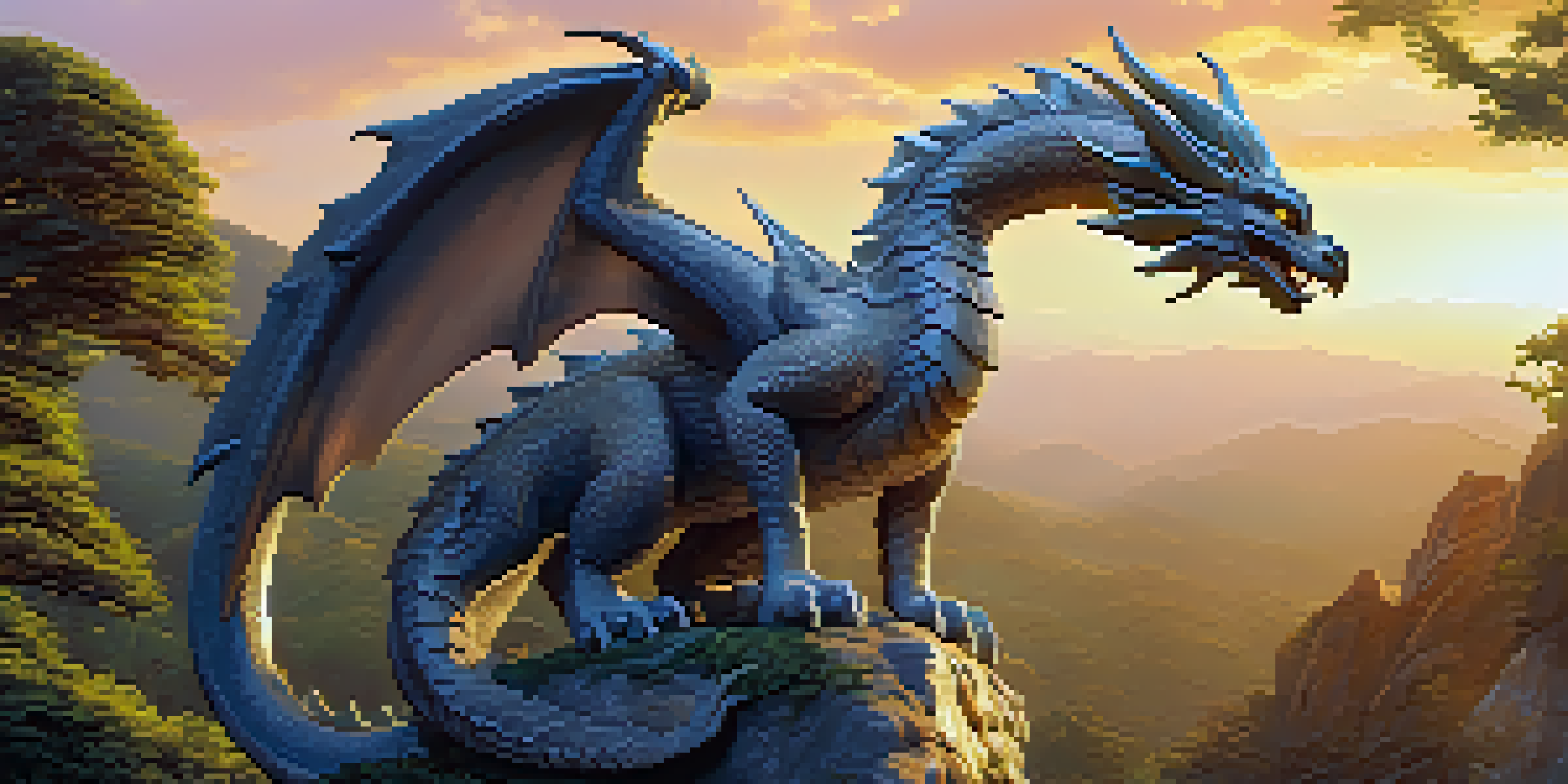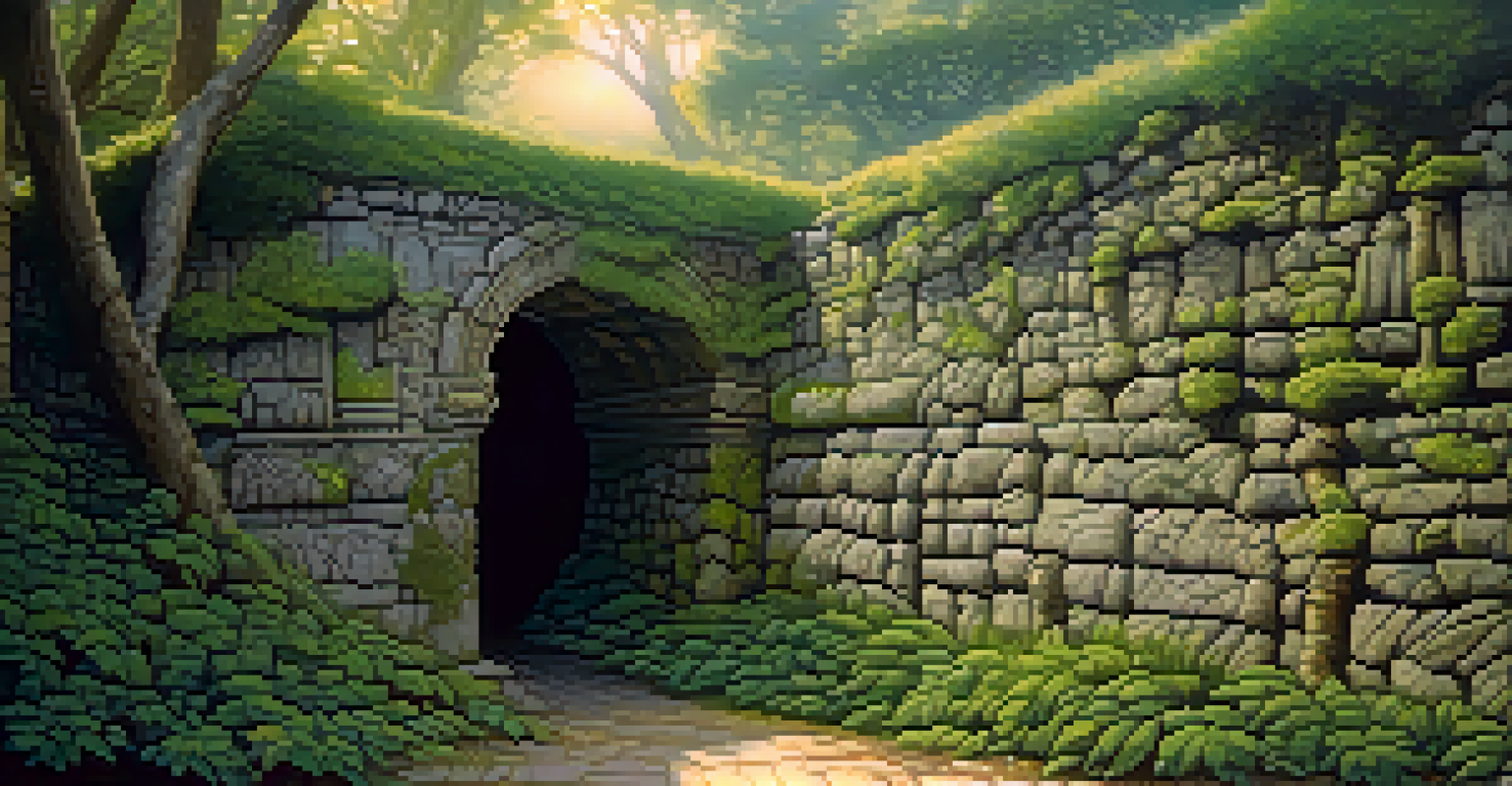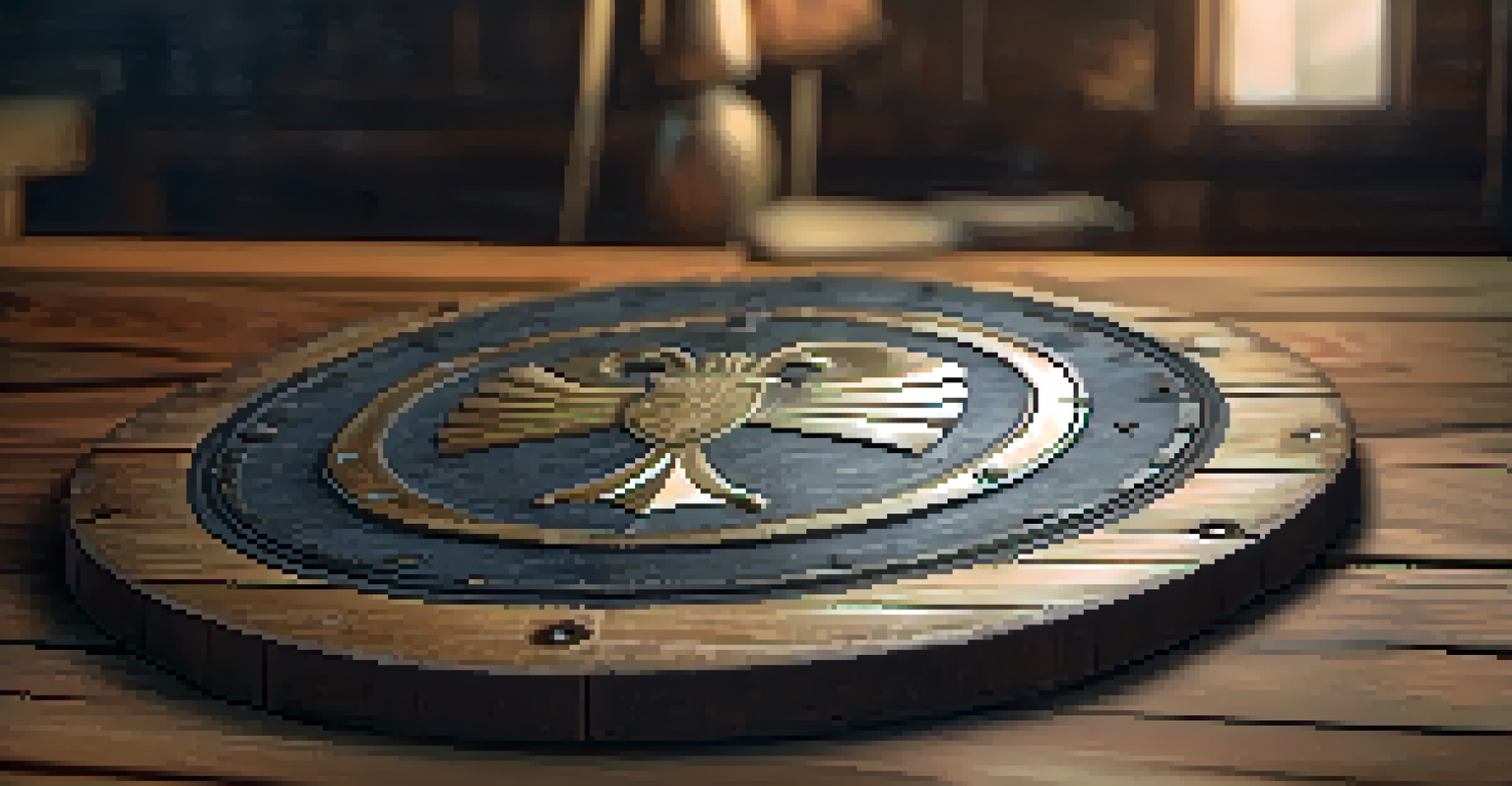The Intersection of Carving and Texture Mapping in Games

Understanding Carving in Game Design
Carving in game design refers to the process of creating 3D models by removing material from a base shape, much like sculpting. This technique allows designers to add intricate details, making characters and environments more lifelike. Think of it as chiseling away stone to reveal a beautiful statue; the final product often reflects the artist's vision and attention to detail.
The art of carving is not just about removing material; it's about revealing the essence of the design.
In modern games, carving can be achieved using various software tools, enabling developers to create complex shapes and features. This technique not only enhances the visual appeal but also aids in storytelling by providing depth and context to the game world. For example, a carved stone wall might hint at an ancient civilization, inviting players to explore its mysteries.
Moreover, carving is often combined with other techniques, such as texture mapping, to create a rich gaming experience. By layering textures over carved models, designers can evoke emotions and immerse players in the game's narrative, making every detail significant.
What is Texture Mapping in Games?
Texture mapping is the process of applying a 2D image, or texture, onto a 3D model to give it color, detail, and realism. Imagine wrapping a gift with beautifully designed paper; the wrapping enhances the gift's appearance without changing its shape. Similarly, texture mapping adds visual flair to 3D models, making them more appealing in the gaming environment.

This technique allows developers to create varied surfaces, from rough rocks to smooth metal, by manipulating how textures interact with light. For instance, a glossy surface might reflect light differently than a matte one, creating a more dynamic and engaging visual experience. This difference can significantly affect a player's perception of the game world.
Carving Enhances Game Visuals
The process of carving 3D models adds intricate details, making characters and environments more lifelike.
Texture mapping not only enhances aesthetics but also helps optimize performance in games. By using textures, developers can maintain a high level of detail without overloading the system with excessively complex models, striking a balance between beauty and functionality.
The Synergy of Carving and Texture Mapping
When carving and texture mapping work together, they create stunning visuals that engage players on multiple levels. Carved models serve as the foundation, while texture mapping adds the intricate details that bring these models to life. This partnership is crucial in creating immersive environments where players can lose themselves in the gameplay.
Texture mapping is like painting a canvas; it transforms the ordinary into the extraordinary.
For example, consider a fantasy game where a carved stone dragon is adorned with scales achieved through texture mapping. The combination of the dragon's detailed structure and realistic textures makes it feel like a living creature, enhancing the player's emotional connection to the game. This synergy is what makes modern games visually captivating.
Additionally, this collaboration is not just about aesthetics; it also influences gameplay mechanics. Well-carved and textured environments can guide players through levels, subtly directing them toward objectives or secrets, thus improving overall game flow and player experience.
Case Studies: Successful Implementations
Many successful games have effectively combined carving and texture mapping to create memorable experiences. For instance, 'The Legend of Zelda: Breath of the Wild' showcases beautifully carved landscapes enhanced by rich textures that depict weathering and age. This attention to detail draws players into the world, making exploration feel rewarding.
Similarly, in 'Dark Souls,' the intricate design of the environment is achieved through meticulous carving, paired with textures that evoke a sense of decay and darkness. This combination not only establishes the game's atmosphere but also communicates its themes effectively, allowing players to feel the weight of their journey.
Texture Mapping Adds Realism
Applying 2D textures to 3D models enhances their visual appeal and realism, contributing to a more immersive gaming experience.
These examples highlight how the intersection of carving and texture mapping can elevate a game's narrative and visual storytelling, proving that thoughtful design choices resonate deeply with players.
The Role of Technology in Carving and Texture Mapping
Advancements in technology have significantly impacted how carving and texture mapping are executed in game design. Software tools like ZBrush and Substance Painter allow artists to create highly detailed models and textures with ease, streamlining the design process. This means that developers can focus more on creativity and less on technical limitations.
Furthermore, real-time rendering technologies have made it possible to visualize complex carvings and textures instantly, enabling designers to see how their work will appear in-game. This immediate feedback loop fosters experimentation, leading to innovative designs that push the boundaries of what games can visually achieve.
The rise of virtual reality (VR) and augmented reality (AR) also opens new avenues for carving and texture mapping. These technologies challenge designers to create immersive experiences, encouraging them to think outside the box and explore new ways to engage players through tactile and visual storytelling.
Challenges in Combining Carving and Texture Mapping
Despite the benefits, combining carving and texture mapping presents several challenges in game design. One major issue is the balance between detail and performance; highly detailed textures can slow down rendering times and affect gameplay. Developers must carefully optimize their assets to ensure a smooth experience without sacrificing quality.
Additionally, achieving a cohesive look between carved models and applied textures can be tricky. If the textures don't align well with the model's details, it can result in a disjointed and unappealing appearance. Designers need to pay close attention to how textures interact with the underlying geometry to maintain visual harmony.
Synergy Boosts Gameplay Experience
The combination of carving and texture mapping not only enhances aesthetics but also influences gameplay mechanics and player engagement.
Finally, as game worlds become more expansive and complex, the demand for detailed carving and texture mapping increases. This means that developers must continuously adapt and innovate, balancing creativity and technical skill to meet the ever-evolving expectations of gamers.
The Future of Carving and Texture Mapping in Gaming
Looking ahead, the future of carving and texture mapping in gaming promises exciting possibilities. As technology continues to evolve, we can expect even more sophisticated tools that empower designers to create breathtaking visuals with greater ease. This could lead to new artistic styles and approaches that challenge traditional design norms.
Moreover, the integration of AI and machine learning into game design processes may revolutionize how carving and texture mapping are approached. Imagine AI tools that can automatically generate textures based on a few input parameters, allowing artists to focus on the creative aspects rather than repetitive tasks.

Ultimately, the intersection of carving and texture mapping will remain a vital component of game design, influencing how stories are told and experienced. As developers push the boundaries of creativity, players can look forward to increasingly immersive and visually stunning gaming adventures.